5 The Wellness Tourism Industry
Learning Objectives
This chapter provides an overview of the wellness tourism industry’s current scope and status including its structure, major sectors and trends.
At the conclusion of this chapter students will be able to:
- Describe the size and state of the wellness tourism industry
- Summarize the structure of the industry and its main sectors
- Discuss the characteristics of each sector, namely
- Identify salient wellness tourism industry trends
Industry overview
Wellness tourism remains one of the fastest growing and most lucrative sub-sectors of the global tourism industry. Between 2012 and 2013, the number of people taking international and domestic wellness tourism trips increased by 12%, while tourism trips overall grew by an estimated 9% (Global Wellness Institute, 2014). Although growth has leveled off slightly, possibly indicating a maturing wellness tourism market, it is projected to remain at an average annual rate of 10.2% through 2028 (Global Wellness Institute, 2024).
Wellness tourism expenditures also remain strong. In 2013, international wellness tourists spent 59% more, and domestic wellness tourists spent 159% more than the average tourist (Global Wellness Institute, 2014). In 2023, wellness tourism expenditures had also recovered to 119% of their 2019 pre-pandemic levels, whereas the recovery rate for all tourism expenditures over the same period was 101% (Global Wellness Institute, 2024).
In 2023 wellness tourism generated $830 billion globally, a figure expected to exceed $1 trillion in 2024* (Global Wellness Institute, 2025). Of that, 27% was generated through international travel (Global Wellness Institute, 2024). The exceptions are tourism-reliant economies, especially those (e.g. Seychelles, Aruba, the Bahamas, and the Maldives) well-known for attracting high-end wellness travelers whom collectively account for a substantial share of these countries’ total wellness spending, ranging between 45% to 75% overall (Global Wellness Institute, 2023).
In general, however, wellness tourism is far more likely to be domestic as it is generally easier and cheaper to take short trips and to travel in-country than overseas. Of the 1,034.5 million wellness trips taken in 2023, 900 million (87%) were domestic while only 134.5 million (13%) were international (Global Wellness Institute, 2024). Domestic wellness travel is also especially dominant in large countries like the United States, Canada, China, Australia, and India, where travelers may choose from a wide range of destinations and wellness resort options (Global Wellness Institute, 2024).
At present, North America (comprised of both the United States and Canada) leads the wellness tourism economies by region (see Figure 7, below) supported by strong domestic demand, well-developed infrastructure, and relatively high per capita income (Global Wellness Institute, 2024). In 2022, North America also surpassed Asia-Pacific for the first time, a region that lagged in its post-pandemic recovery. This was primarily due to extended pandemic restrictions and border closures in China which resulted in a significant decrease in Chinese tourists across the region (Global Wellness Institute, 2023). Similarly, European wellness tourism has faced regional challenges due to the war in Ukraine, rising energy prices, and staffing shortages (Global Wellness Institute, 2023).
*Note that these figures reflect the total spending of all wellness travelers. That is, expenditures include accommodations, food and drinks, activities and excursions, shopping, and local transportation, and are calculated based on spending by both primary and secondary, as well as international and domestic, tourists (Global Wellness Institute, 2025).
Figure 7: Wellness Tourism Sector by Region in 2023
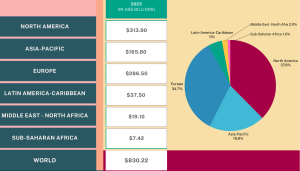
The tourism industry is the sum of services catering to tourists, including “the provision of transportation, accommodation, attractions and activities, financial services, tourist publications and tour guides, among other things” (Camilleri, 2018, p. 30). The industry is comprised of four main sectors: (i) Transportation (ii) Accommodations (iii) Ancillary Services and (iv) Sales and Distribution (Camilleri, 2018). Events comprise a closely related, often overlapping industry (e.g. traveling to another city to attend the Super Bowl), in its own right and is discussed separately, below.
As we shall also see, not all service offerings conform precisely to the above delineation of tourism industry sectors. Wellness cruises, like cruises in general, are typically closed-loop (meaning they return to the port of origin rather than providing transportation to and from a destination), and include accommodations as well as offer a wide variety of ancillary services (e.g., food and beverage, spa, retail, and entertainment) (Camilleri, 2018). Similarly, wellness resorts offer both ancillary services and accommodations bundled into all-inclusive packages, and these two sectors will be integrated in the discussion below, accordingly.
Nevertheless, the above framework provides a useful starting point for discussing the wellness tourism industry, overall. To illustrate how these sectors apply to wellness tourism, a visual representation with geographic elements (Leiper, 1979), wellness tourists, and events is presented in Figure 8, below. Note that while we cover Transportation, Accommodations, and Events here, a discussion of wellness tourists is provided in Chapter 7, and Publications and Online Content, as well as Sales and Distribution is covered in Chapter 8.
Figure 8: Wellness Tourism Industry Components

Transportation
 Dedicated wellness tourism components in the transportation sector are not well-represented in most modes of travel, with a few notable exceptions. Even the relatively recent addition of airport spas offering pampering services to travelers, are not quite up to the task of bringing the stress of modern air travel in-line with concepts of holistic well-being. The proposed introduction of a well-being zone on Quantas Airlines (see below), however, may signal a positive, first step in a wellness-oriented direction. Wellness cruises are another notable exception as there are now a plethora of offerings specifically designed with the wellness traveler in mind, in this sector (see below).
Dedicated wellness tourism components in the transportation sector are not well-represented in most modes of travel, with a few notable exceptions. Even the relatively recent addition of airport spas offering pampering services to travelers, are not quite up to the task of bringing the stress of modern air travel in-line with concepts of holistic well-being. The proposed introduction of a well-being zone on Quantas Airlines (see below), however, may signal a positive, first step in a wellness-oriented direction. Wellness cruises are another notable exception as there are now a plethora of offerings specifically designed with the wellness traveler in mind, in this sector (see below).
Air travel and Wellness
 Qantas Airlines is introducing a Wellbeing Zone on its ultra-long flights from Sydney to New York and London in late 2025 (Singer, 2023). This zone will be located between the Premium Economy and Economy cabins and will include sculpted wall panels, integrated stretch handles, on-screen exercise programs, a hydration station, and refreshments (Singer, 2023). Qantas will also become the only airline with a designated onboard stretch and movement space, as movement and exercise are recognized as key to traveler well-being (Singer, 2023).
Qantas Airlines is introducing a Wellbeing Zone on its ultra-long flights from Sydney to New York and London in late 2025 (Singer, 2023). This zone will be located between the Premium Economy and Economy cabins and will include sculpted wall panels, integrated stretch handles, on-screen exercise programs, a hydration station, and refreshments (Singer, 2023). Qantas will also become the only airline with a designated onboard stretch and movement space, as movement and exercise are recognized as key to traveler well-being (Singer, 2023).
Qantas also collaborated with the University of Sydney to research how to reduce jet lag. The inflight trials involved tailored cabin lighting schedules to facilitate adaptation to the destination time zone as well as the timing of meal services to align the body clock (Singer, 2023). Study results indicated that different lighting and sleep schedules, mealtimes, and specific ingredients like chili and chocolate during long-haul flights contribute to improved traveler well-being (Singer, 2023). Other menu items such as fish and chicken paired with fast-acting carbohydrates, or comfort foods like soups and milk-based desserts, can also promote sleep (Singer, 2023).
Wellness Cruises
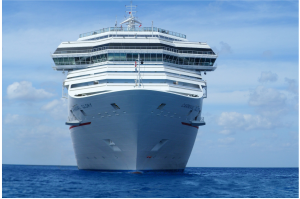 While the cruise industry still represents a small fraction of global tourism, it is currently experiencing a period of rapid growth and evolution. In 2018, cruises accounted for only 2% of worldwide tourism. Following an almost total shut-down during the COVID-19 crisis, global cruise tourism has rebounded and is projected to expand significantly at an annual growth rate of roughly 11.4% to reach $21.02 billion in global revenue by 2027.
While the cruise industry still represents a small fraction of global tourism, it is currently experiencing a period of rapid growth and evolution. In 2018, cruises accounted for only 2% of worldwide tourism. Following an almost total shut-down during the COVID-19 crisis, global cruise tourism has rebounded and is projected to expand significantly at an annual growth rate of roughly 11.4% to reach $21.02 billion in global revenue by 2027.
The expansion of the cruise industry is being fueled by several factors including the introduction of larger-capacity cruise ships, the expansion of itineraries to encompass new destinations, an increase in the number of ports-of-call, and the incorporation of diverse onboard and on-shore recreational activities. In addition, the industry has successfully begun to attract more diverse traveler demographics.
One of the ways the cruise industry is attracting new travelers is through themed cruises. This trend includes the emergence of specialized wellness cruises and, more recently, an entire cruise line (see Blue World Voyages, below) dedicated to providing wellness and transformative experiences.
Wellness cruises often feature curated programs led by well-known figures in fields such as fitness, nutrition, yoga, and meditation. These programs may include workshops, seminars, and interactive activities designed to support or educate guests in pursuing healthier habits. For example, P&O Cruises has introduced “Wellbeing and Lifestyle” cruises, which offer activities and workshops focused on holistic health and lifestyle guidance. These workshops are hosted by wellness enthusiasts who lead sessions on topics including sleep hygiene, skincare, wardrobe essentials, breath-work, and meditation. Similarly, Swan Hellenic partnered with Deepak Chopra in 2024 to offer six cruises styled as “journeys of rejuvenation and self-discovery” (see below).
In addition to educational programming, wellness cruises promote well-being through various avenues. Physical activity is a major component, offering guests the opportunity to participate in fitness classes such as yoga, Pilates, spinning, and core training. Active shore excursions may include hiking, kayaking, pickleball, and other pursuits tailored to varying fitness levels. These cruises also emphasize health-conscious dining, spa services, and mental wellness offerings. Menus are typically designed with nutrition in mind, featuring organic, plant-based, along with clearly labeled healthy options. Some cruise lines collaborate with local farmers, artisans, and fisheries at each port of call to procure fresh, seasonal produce and specialty items, enhancing both sustainability and authenticity. Guests can also enjoy spa treatments, sleep-enhancing amenities, and mindfulness sessions like guided meditation or journaling. Additionally, wellness cruises may encourage social connection through shared activities and community-building events.
However, the cruise line industry overall has yet to achieve sustainable operations, primarily due to its significant and disproportionately large environmental impact. While some cruise lines acknowledge these issues and are taking steps towards addressing them, concerns remain. For instance, certain ships now switch to more environmentally friendly diesel engines while in port to reduce air pollution. Nonetheless, air pollution along with other areas of concern persist including waste and water pollution, as well as the challenge of supporting local communities and economies when docking at ports of call without contributing to cultural disruption, economic imbalance, or overtourism.
Highlight: Blue World Voyages and Swan Hellenic
Blue World Voyages: This cruise line described itself as “the first cruise line in the world dedicated to sports and wellness”. Blue World Voyages’ commitment to embedding wellness into every aspect of the cruise experience includes the “largest athletic and fitness conditioning facility at sea” with a comprehensive range of equipment and classes. The cruise line features two decks dedicated to spa amenities, offering a wide array of treatments and facilities and itineraries are curated to support an active lifestyle, featuring destinations with opportunities for hiking, cycling, water sports, and golf. Healthy dining options are provided through a variety of specialty restaurants. In a nod to sustainability, the ship is designed to be the “healthiest at sea” by including a focus on a low-density travel experience to avoid overcrowding.
Swan Hellenic partnered with Deepak Chopra to offer “Explore & Restore” voyages. Swan Hellenic and Chopra, an integrative health company founded by Dr. Deepak Chopra, offered six “Explore & Restore” voyages that were scheduled throughout 2024. Some were offered as so-called daisy-chain cruises, which are cruises scheduled back-to-back, allowing guests to combine voyages for a longer wellness experience. Dr. Chopra himself was also scheduled to present on at least two of the cruises, namely the “Balancing Your Mind and Body” voyage and the “Inner Connection” voyage both of which departed in May 2024.
Accommodations

This tourism sector encompasses all forms of overnight accommodations from five-star hotels to caravan parks and everything in between (Camilleri, 2018). There is likewise a wide range of accommodation types in wellness tourism from full board (all meals included) and luxury wellness resorts, to wellness hotels and festival campsites. A distinguishing characteristics of wellness resorts, however, is that amenities and services designed to enhance holistic well-being are integral to their design and function and represent the core product offering, while accommodations serve an important but secondary purpose. Consider, for example, the website of the iconic Miraval Resort in Arizona. Note that while the websites make mention of accommodations as part of their all-inclusive packages they offer, as well as briefly feature guest suites in their promotional video, it is the desert landscape, daily schedule of activities, wellness experiences, and luxury spa that are highlighted.
Wellness Resorts
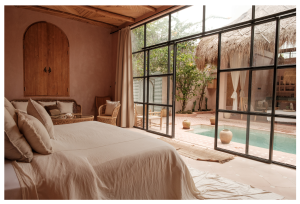
Wellness resorts, also called fitness resorts, destination spas, health resorts, and lifestyle resorts, are a crucial part of the wellness tourism industry as they are dedicated spaces designed to provide immersive experiences and promote holistic well-being, and are often the focal point of a wellness vacation. As such, we will consider these in a little more detail, below.
In the US, ownership of wellness resorts can be corporate, franchise, or independent although the first two categories remain in the minority. Major hospitality groups have entered the wellness space, most notably Hyatt Hotels Corporation, which acquired the Miraval Group in 2017, including its flagship Arizona resort and related spa properties (Hyatt, 2017). Franchised models also exist such as ZENDERA Spa Retreat™. This franchise offers luxury spa experiences as part of the Zen Spa® chain, which has been in operation since 1998 (ZENDERA Spa Franchise, n.d.).
Hilton Head Health, a popular wellness resort in operation since 1976, was acquired by private investment firm Wake Capital Partners in 2017, and is an example of an independently owned wellness resort (Kerr, 2017). Wellness resorts owned and operated by private individuals or families are also numerous. These independently owned wellness resorts may offer a more personalized or uniquely inspired approaches to well-being. For example, Honey Hollow Farm is a rustic Pennsylvanian farm house that offers a relaxed and cozy ambience with a focus on creative expression through art and writing. By contrast, Shou Sugi Ban House in New York state offers a more exotic atmosphere and refined approach to wellness in a curated environment inspired by Japanese aesthetics and healing traditions.
In some cases, minimum stays at a wellness resort are recommended to maximize benefits, although shorter stays and weekend options may be available. Historically, the definition of a destination spa included a seven-day stay, with spa services integrated into a program designed to help guests establish healthful habits (ISPA Foundation, 2024, p. 2). Fitness resorts typically offer programs that run in one-week increments, and travelers are advised to stay at least one week for a fully immersive experience, while longer stays of up to 2-3 weeks are recommended (FitStays, 2023). Likewise, for weight loss programs a minimum stay of two weeks is often recommended for noticeable results (Klemesrud, 1972). Canyon Ranch offers 5-day Immersion™ Wellness Retreats while a two-night minimum is required at several of its location (Spivack, 1997). The Kripalu Center for Health and Yoga, on the other hand, offers a range of programs from two-night stays to 27 nights (Stein et al., 1990).
Wellness resorts may also specify check-ins days such as every Sunday, to align with the start of their standard wellness programs. In many cases, programs follow set daily schedules curated to provide balance, variety and flow. An example is provided below:
Morning: The day often begins with a session of yoga or meditation, followed by a wholesome breakfast. This sets a positive tone for the day ahead.
Midday: After breakfast, guests typically engage in fitness activities such as Pilates, tai chi, or group exercises. These sessions are usually scheduled at various intervals to maintain energy levels and provide variety.
Afternoon: Lunch is followed by group activities and classes. Workshops focusing on topics like healthful cooking, nutrition, stress management, and mindfulness are common. Additionally, personalized wellness consultations, health assessments, and treatments like massages, facials, and holistic therapies are typically available by appointment.
Evening: Dinner is followed by evening activities designed to help guests unwind. These may include restorative yoga or meditation sessions. Some resorts offer sound healing sessions, where guests can experience the therapeutic effects of soothing sounds or music, enhancing relaxation and mental clarity before bedtime. Light, relaxing activities such as walking or stargazing are also incorporated into the schedule.
Wellness resort are comprised of four primary elements, (1) accommodations, (2) wellness activities, (3) healthy food and beverage options, and (4) wellness facilities (Okumus & Kelly, 2023).
Accommodations
Wellness resorts vary widely in cost, with some programs starting at around $1,500 per week while others can exceed $7,000 per week (FitStays, 2023). Regardless of price point, resorts typically offer all-inclusive package including accommodations, ancillary services, and meals (FitStays, 2023). Additional wellness services and activities such as spa treatments, fitness classes, and wellness therapies, may also be available as add-on treatments.
High-end accommodations at wellness resorts offer luxurious, spacious rooms or private villas designed for comfort and privacy. Guests may enjoy dedicated concierge services for arranging tailored wellness experiences, ensuring a bespoke and indulgent retreat. Accommodations feature high-quality furnishings, premium bedding, and expansive bathrooms, often with special amenities like soaking tubs or private outdoor spaces. Dining experiences are gourmet, with personalized, organic, and locally sourced meals tailored to specific health needs and preferences. Wellness programs may be personalized, including one-on-one yoga, fitness training, and holistic treatments designed to meet individual goals. World-class spas with an extensive range of treatments and exclusive features like thermal pools and private treatment rooms are also typical. Recreational activities curated to connect guests with nature may include guided outdoor adventures like hiking or kayaking.
Mid-range accommodations at wellness resorts offer comfortable, functional rooms designed with a focus on relaxation and well-being. These rooms typically feature natural decor and basic wellness amenities like yoga mats and aromatherapy diffusers. While some resorts may offer shared rooms or semi-private spaces, many provide private rooms. Dining options usually focus on organic, locally sourced meals tailored to promote health, with options for specific dietary preferences like vegan or gluten-free. Wellness programs include group classes, fitness sessions, and guided outdoor activities. Spa services are often available, though more limited in scope and luxury. Common areas for relaxation, such as gardens or lounge spaces, are shared by guests, fostering a communal atmosphere that enhances the wellness experience.
Budget-friendly accommodations at wellness resorts may feature simple sleeping arrangements such as shared rooms, dormitory-style setups, or group lodgings. These accommodations are also common at group or communal retreats, where the emphasis is on collective wellness experiences rather than private luxury. Some wellness resorts also offer shared rooms as part of their eco-friendly or minimalist approach, encouraging guests to focus on simplicity and shared experiences. Guests may also share bathrooms and communal areas. Dining is generally healthy and wholesome, with options catering to dietary preferences like vegetarian or gluten-free, though they are less gourmet than those at upscale resorts. Wellness programs usually consist of group activities such as yoga, fitness classes, and guided nature walks, providing an accessible and supportive experience for guests. Spa services, when available, are more basic, and the focus is on providing a restorative experience at a budget-friendly price.
Wellness activities
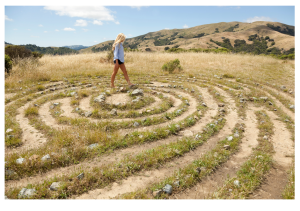 Wellness resorts offer a variety of ancillary services, including activities and amenities designed to promote relaxation, rejuvenation, and overall well-being (see examples below). Some resorts may also specialize in particular forms of wellness or alternative therapies, such as energy healing, indigenous practices, or traditional medicine. Even when there is no specialization, the range and types of activities typically reflect the style or primary emphasis of a resort’s wellness program. For example, fitness resorts feature a wider variety of exercise classes, scheduled at multiple intervals for up to 3–6 hours per day (FitStay, 2023). These activities may range from less-structured exercises like jogging or hiking to more structured options such as cardio or strength classes in a gym, or group activities like swimming and Zumba (FitStay, 2023).
Wellness resorts offer a variety of ancillary services, including activities and amenities designed to promote relaxation, rejuvenation, and overall well-being (see examples below). Some resorts may also specialize in particular forms of wellness or alternative therapies, such as energy healing, indigenous practices, or traditional medicine. Even when there is no specialization, the range and types of activities typically reflect the style or primary emphasis of a resort’s wellness program. For example, fitness resorts feature a wider variety of exercise classes, scheduled at multiple intervals for up to 3–6 hours per day (FitStay, 2023). These activities may range from less-structured exercises like jogging or hiking to more structured options such as cardio or strength classes in a gym, or group activities like swimming and Zumba (FitStay, 2023).
Alternatively, destination spas that emphasize pampering services may or may not offer exercise classes at all. A list of ten core categories of activities and services offered at destinations spas, along with the percentages of destination spas offering these (Winsom, 2017) is listed below.
| Massage services | Hands on manipulative body treatments offered by licensed massage therapists e.g. Swedish massage | 100% |
| Facial skin care services | Facial treatments offered by licensed skin care specialists, such as estheticians or cosmetologists. A facial protocol generally includes cleansing, exfoliating, and treatment to beautify the skin. | 100% |
| Body skin care services | Body treatments are skin care for the body e.g. body scrubs or wraps | 100% |
| Salon services | Salon services are beauty services offered by licensed skin, hair and nail specialists, such as estheticians, nail technicians or cosmetologists e.g. manicures and pedicures | 90% |
| Fitness or sports offerings | Fitness and sports facilities or programs administered by licensed professionals or fitness instructors e.g. fitness studios, posture and alignment, cardio fitness and group fitness classes | 62% |
| Mind, body and spirit | Instructional therapies e.g. are yoga, meditation or tai chi | 56% |
| Hydrotherapy | Hydrotherapy offerings are water therapies that can be either self-administered or delivered by a treatment provider e.g. steam sauna or Vichy showers | 47% |
| Complementary therapies | Therapist provided alternative therapies e.g. reflexology, cranio-sacral therapy or reiki | 29% |
| Wellness programs | Educational programs taught by individuals with a wide range of skills and backgrounds e.g. healthy eating and cooking classes, stress management and holistic health | 13% |
| Medically supervised services | Medically supervised services by licensed professionals e.g. chemical peels, microdermabrasion, botox, laser hair removal and medical consultation | 11% |
Food and beverage

Wellness destinations serve catered, healthful meals as set menus or buffet-style dining, typically included in the overall cost of a stay, although some offer à la carte options as add-ons.
Meals are often prepared from scratch, free of artificial colorants, chemicals, and preservatives. They are typically low in fat or made with healthful fats (e.g., organic plant-based oils), and use locally sourced or organic ingredients.
Wellness destinations may also offer specialized menus tailored to various health goals, such as nutrient-dense foods, detoxification and fasting options, or dietary preferences (e.g., vegan). Menus often include vegetarian, vegan, gluten-free, and dairy-free options. Personalized nutrition plans, juicing programs, and detox-focused diets that emphasize restorative and balancing ingredients may be offered as optional or supplemental meal plans. In some cases, calorie restrictions or supplements are included. Certain settings, such as Indian ashrams, may prescribe a Spartan diet or fasting regimen to promote physical and spiritual healing (Chen et al., 2013).
Wellness facilities
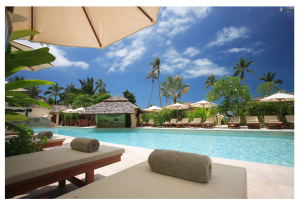
Wellness Retreats
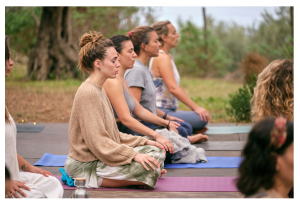 In the wellness industry, the term retreat has two different meanings. In some cases it draws from the historical antecedent of secluded places where devotees or laymen withdrew from society to practice or deepen their faith under the auspices of a particular religious sect (see Chapter 4: Introduction to Wellness Tourism). Such retreats remain avenues for secular spiritual growth and connecting with one’s higher self, often incorporating rituals, ceremonies, and guided meditation whether for individuals or groups (Ouel-lette, Kaplan, & Kaplan, 2005).
In the wellness industry, the term retreat has two different meanings. In some cases it draws from the historical antecedent of secluded places where devotees or laymen withdrew from society to practice or deepen their faith under the auspices of a particular religious sect (see Chapter 4: Introduction to Wellness Tourism). Such retreats remain avenues for secular spiritual growth and connecting with one’s higher self, often incorporating rituals, ceremonies, and guided meditation whether for individuals or groups (Ouel-lette, Kaplan, & Kaplan, 2005).
Many such retreats now also serve as “safe” spaces for self-development and to navigate challenging life events, such as serious illnesses or relationship breakups (Kelly & Smith, 2016) or they may simply serve as sanctuaries to help individuals find peace, clarity, or inspiration through a welcome break from daily routines (Rose, 2023).
A wellness retreat center or lifestyle retreat, may also offer a range of services and activities that cater to holistic well-being. For example, these centers may feature amenities such as meditation rooms, yoga studios, treatment rooms for massage and alternative therapies, or tranquil outdoor spaces to facilitate introspection through quiet reflection or activities such as labyrinth walking.
The term retreat may also refer to a curated, multi-day wellness program, with a set or semi-set schedule (Allied Market Research, 2024). Such retreats offer an immersive experience with various planned activities and may include longer weeks-long or short week-end get-aways.Activities are typically designed around a specific theme or intention, such as stress management, life coaching, creative development, or spiritual growth. Structured programs using guided, intention-driven itineraries spanning multiple days are hosted by one or more facilitator with specialized services or skills. These facilitators play a crucial role in creating a supportive and transformative environment for the retreat participants and may include wellness influencers, or prominent gurus or shamans with indigenous knowledge. Popular yoga instructors with an existing following are also well-represented in this space.
Wellness retreat are very popular and some be offered by who simply co-ordinate and package wellness experiences for profit in dedicated wellness facilities with retreats organized in-house or by a third-party retreat operator for a specific period of time. Alternatively, programs may be housed in temporary retreat settings that are rented or leased for the duration of the program.
The choice of a retreat venue often reflects the specific aims of the retreat program and the intended experience for participants. and this approach offers flexibility in terms of location and allows retreat operators to curate experiences in diverse settings. For instance, yoga teachers might organize retreats for their regular clients in a variety of overseas destinations, leveraging the appeal of a new environment and combining yoga practice with travel.
Wellness retreats encompass a diverse range of retreat types and purposes (Cloutier, 2015; Hesselberth, 2021; Kelly & Smith, 2016). Examples of popular types of retreats are provided below. Of these, yoga and exercise are the most popular wellness retreats overall, accounting for 17.8%, and 17.1 respectively of all bookings compared with other retreat types such as stress management (9.7%) and detoxification retreats (8.1%) according to one industry report (Grand View Research, 2022). Examples of types of retreats are included below.
Wellness hotels
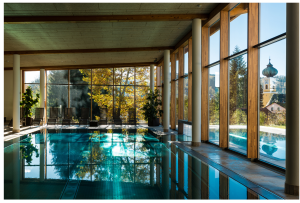
Wellness hotels are conventional hotels that have incorporated wellness services and amenities. Some of these, such as InterContinental Hotels’ EVEN brand concept, are hotels rather than dedicated wellness facilities and do not include services and amenities that cater to the spiritual dimension of holistic well-being. As such, the brand is best described as a hotel that is wellness focused or themed rather than a wellness destination category. Other hotels, such as the Rosewood Hotel Group, offer wellness retreats designed specifically to enhance holistic well-being, comparable to wellness programs at dedicated wellness destinations. In fact, a growing number of hotel chains and international hospitality brands have incorporated aspects of wellness into their portfolios, especially following the pandemic (Nance-Nash, 2022). These developments are important indications of the extent to which wellness tourism and the wellness movement overall have impacted and become integrated into the hospitality industry. A few examples to illustrate the range and extent of this integration follow.
Billed as the “first mainstream hotel brand focused on wellness,” InterContinental Hotels (IHG) launched EVEN Hotels, an upscale, limited service hotel chain, in 2012. There are now over 50 EVEN Hotels that have opened or are in the pipeline worldwide (Gullett, 2012; Nandi, 2023). The EVEN brand concept followed 18 months of research, the results of which indicated a growing demand for holistic wellness, especially among travelers wanting to maintain a healthy lifestyle while on the road. EVEN Hotels were designed to meet this travel segment’s needs with, for example, in-room workout equipment, hypoallergenic linens, and natural lighting, along with other hotel amenities such as top-tier gym facilities, healthful menu options, and social areas in the bar and lobby.
Post-pandemic, the Hyatt hotel company developed various wellness-focused offerings such as wellness suites, guided hikes, and flotation therapy at numerous properties. Park Hyatt New York, for example, introduced the Bryte Restorative Sleep Suite, with customizable beds to promote restful sleep. The suites also included sleep-enhancing amenities such as diffusers with essential oils, sleep masks, and sleep-related books. At Hyatt’s Thompson Washington D.C. hotel, guests were offered flotation therapy through a partnership with a local spa.
The JW Marriott brand, with its 121 worldwide locations, was founded as a luxury hotel chain in 1984 but recently rebranded to align with wellness concepts such as mindfulness with their tagline “stay in the moment.” Their hotels are now described as havens designed to let guests focus on feeling whole—present in mind, nourished in body, and revitalized in spirit.
Also under the Marriott International umbrella, Ritz-Carlton hotels introduced its “Meaningful Wellness Journeys” post-pandemic. Ritz-Carlton partnered with the spa brand ESPA to offer new wellness treatments at select hotels, ostensibly to address an increasing demand for wellness experiences among luxury consumers (Whitby, 2022). Described as exclusive wellness initiatives, the collection of new treatments is centered around three wellness pillars: Mind, Body, and Skin (Whitby, 2022). Treatments are designed not only to address physical needs but to incorporate elements of mindfulness and mental wellness (Whitby, 2022). For example, in addition to the treatments themselves, the Ritz-Carlton provides pre-treatment rituals to prepare guests and post-treatment guidance for continuing wellness practices at home (Whitby, 2022).
Finally, the Rosewood Hotel Group, an international luxury hotel management company, launched “Journey to Resilience” post-pandemic. Offered at fourteen of its properties across the globe, these multi-day retreats were designed around four key aspects of resilience: positivity, purpose, resourcefulness, and compassion (Luxury, 2021). Daily itineraries include fitness, nutrition, and well-being therapies to balance emotional, physical, and mental well-being, with wellness offerings tailored to each location, such as forest bathing at the Rosewood Castiglion del Bosco in Tuscany or CBD therapy massage at the Rosewood Miramar Beach in California (Nance-Nash, 2022).
Events

Festivals are a singular but increasingly popular form of tourism-related events. Although up-to-date global economic data on wellness festivals is limited, they are now a vital component of the expanding wellness tourism sector. The launch of Wanderlust festival in 2009 (see below) sparked a wellness festival trend that extended throughout the 2010s. By 2017, the number of wellness festivals was growing at an annual rate of about 20%, generating hundreds of millions of dollars in the U.S. alone. Following the COVID-19 pandemic, these festivals saw a resurgence, suggesting that the global health crisis may have heightened a related focus on community and holistic well-being.
Beyond their financial success, wellness festivals play a significant role in shaping and supporting the broader wellness market. They serve as an industry barometer, reflecting and reinforcing societal shifts and emerging trends. Apparel companies and lifestyle brands also use these events to showcase products and connect directly with consumers seeking health-conscious lifestyles. Festivals frequently include vendor booths and brand-sponsored events, while sponsorships from purpose-driven companies, and B Corps (short for Benefit Corporation, which is a for-profit company certified to meet high standards of social and environmental performance, accountability, and transparency) help fund many of these festivals.
Wellness Festivals
A wellness festival is a multi-day event centered on holistic well-being that attracts individuals seeking healthier lifestyles.
These festivals originated as both an offshoot and an alternative to traditional music festivals. Although contemporary wellness festivals now differ in several important ways, their roots trace back to the iconic Woodstock Music and Art Fair in 1969. While primarily a music event, Woodstock embraced alternative spirituality and symbolized the 1960s’ growing mind-body consciousness. A devotee of Eastern philosophy named Steven Silberfein, for example, invited Swami Satchidananda to open Woodstock with an invocation in front of 500,000 attendees. In a nod to these counter-cultural origins, Verve Festival in Wiltshire, England, still bills itself as the “Woodstock of Wellness.”
Silberfein later went on to found Bhakti Fest in 2009, an annual yoga and spiritual festival held in Joshua Tree, California. That same year, the first Wanderlust Festival debuted as a fusion of music and wellness. A few years later, the first Further Future, a “boutique music festival for the wellness obsessed” (Abrams, 2016), was held in Nevada.
Numerous wellness festivals followed, which vary widely in terms of program depending on size, location, organizers, and target demographics. Although wellness festivals still share some similarities with music festivals, they prioritize wellness, community, and personal growth. Like music festivals, wellness festivals are typically annual, multi-day events that offer a full schedule of activities. However, the emphasis is on rejuvenation over indulgence, with many being drug and alcohol free, appealing to the growing “sober curious” demographic. Others take a more neutral approach by promoting mindful drinking. Music often remains an important feature, but typically complements wellness practices rather than taking center stage. For example, Meadows in the Mountains in Bulgaria integrates live music performances with yoga, meditation, and cacao ceremonies.
Wellness festivals may also include activities like yoga, meditation, dance, art installations, sound healing, chef demonstrations, and fitness workshops, led by top instructors, wellness experts, and thought leaders. For instance, the International Yoga Festival in Rishikesh features guidance from India’s most respected spiritual teachers. Some festivals also include more unique offerings, such as intentional laughter exercises, or encourage new perspectives through headline speakers. For example, Further Future hosted NASA scientist and Native American shaman Dr. Bear Walker to discuss the integration of Indigenous wisdom with modern science.
Large festivals like Wanderlust host up to 45 events globally and attract around 120,000 participants annually. The Balance Festival sees over 10,000 attendees across three days. Smaller festivals, such as the Bali Spirit Festival (5,000 attendees), DisclosureFest in Los Angeles (4,000), and Soul Circus in Gloucestershire (1,000 to 1,500), offer more intimate experiences. Some offer luxury accommodations and upscale amenities, while others emphasize spiritual practices and simplicity. Many strive to be inclusive, welcoming attendees of all experience levels, backgrounds, and identities. Some are family friendly, with activities designed for children.
Lodging options vary greatly. Many festivals offer camping to enhance immersion, such as Wanderlust’s full-service campground in Vermont. For more comfort, options like “glamping” (e.g., at Retreat Yourself in South Africa) are provided with upgraded tents and amenities. Further Future offers “lunar palaces,” which are luxury domes with wooden floors and furnishings. Festivals near towns or resorts may also include hotels, lodges, and private rentals as part of their accommodation offerings. Food is central to the wellness festival experience and typically includes organic, functional foods and vegetarian or vegan meals. Attendees can often explore diverse ethnic cuisines, such as vegan ramen and kombucha, from on-site markets and food vendors.
Other features typical of wellness festivals include a strong sense of community and sustainability as core values. In addition to promoting mindfulness and self-awareness, wellness festivals offer a valuable social experience. Like music festivals, they fulfill a human need for shared connection through communal classes and workshops. For many, these relationships extend beyond the festival itself, creating lasting connections grounded in wellness. Finally, many festivals incorporate eco friendly principles and practices such as the use of sustainable materials and resources, reducing waste, and supporting local economies through sourcing local food and services. Some also run fundraising and awareness campaigns tied to social or environmental missions.
Highlight: Wanderlust Festival
The Wanderlust Festival bills itself as the world’s first large-scale wellness event and now includes the off-shoots Wanderlust 108 triathlon and Wellspring conference as annual events.
The idea for Wanderlust originated in 2009 when co-founder Jeff Krasno, inspired by the yoga community surrounding his wife, Schuyler Grant’s Manhattan studio, envisioned an event that blended live music with yoga. The first Wanderlust Festival took place that same year in Squaw Valley, California, attracting approximately 2,500 attendees.
The festival’s mission, as described by co-founder Sean Hoess, is to help people “find their true north” and cultivate their best lives. The festival offers a range of activities such as yoga, meditation, hiking, music, and inspirational talks by renowned figures like Deepak Chopra. Over time, Wanderlust evolved from a single music festival centered around yoga into a global series of festivals. Its growth has been remarkable: by 2011, over 21,000 people were attending Wanderlust events. Today, Wanderlust hosts 45 gatherings worldwide, attracting approximately 120,000 participants annually. The festival expanded its reach by establishing a permanent venue in Austin, Texas, offering year-round programming that includes yoga, live music, and organic food.
Wellness tourism industry trends
The wellness tourism industry is dynamic, continually evolving in response to shifting consumer preferences, emerging health trends, and global events. While some trends emerge and fade, others exhibit more consistency over time. Therefore, even though wellness tourism providers may not need to continuously adjust their service offerings in response to transient trends, industry stakeholders would do well to stay informed about more enduring developments to effectively meet the evolving needs of wellness travelers and their target markets.
Since 2021, the Global Wellness Institute has published annual trend reports focusing on wellness tourism. Based on these reports from 2021 to 2024, six recurring themes have emerged:
Which knowledge, skills, and abilities are supported by this chapter?
Analytical skills are critical for interpreting market data and translating insights into strategic planning. Market data includes a grasp of global and regional tourism trends and the economic impact of wellness tourism, along with the distinction between domestic and international travel . Operational knowledge of the tourism industry’s core sectors (transportation, accommodations, ancillary services, and sales/distribution) is also vital to navigating this fast-evolving, multifaceted industry, as well as an understanding of the ways in which wellness offerings increasingly blur these lines. Across all segments, including air and cruise travel, accommodations, retreats, and festivals, professionals must integrate wellness principles into guest experience design through personalized programs that combine movement, nutrition, mindfulness, and restorative environments. Core competencies include adaptability, innovation, cultural awareness, emotional intelligence, and interdisciplinary coordination. Operational and logistical proficiency is crucial for managing diverse settings, while sustainability awareness and the ability to align services with evolving consumer values further unify these roles.
Review Questions
- What are the four sectors of the tourism industry and how do these intersect with wellness tourism?
- What distinguishes a wellness resort from a traditional accommodation in terms of purpose, amenities, and guest experience?
- Why is cultural competence essential for professionals in wellness tourism, particularly in facilitating retreats or managing international guests?
- In what ways do wellness festivals reflect broader societal trends, and how can professionals leverage these insights in program design and marketing?
- Compare the operational and service delivery challenges of managing wellness experiences in mobile environments (e.g., air or cruise travel) versus fixed locations (e.g., resorts or retreat centers).
- What are the shared KSAs required across wellness accommodations, retreats, festivals, and wellness travel settings, and how do they contribute to guest transformation and satisfaction?
- How do wellness retreats balance hospitality, holistic health practices, and psychological insight to deliver intention-driven programs?
- What role does sustainability play in the design and execution of wellness tourism offerings, particularly in large-scale festivals and eco-conscious retreats?
- Why is the ability to analyze tourism market data and trends crucial for strategic planning in wellness tourism? Provide examples of actionable insights this analysis might yield.
- Explain how post-pandemic shifts in consumer values have influenced the integration of wellness into mainstream hospitality brands and event formats.
References
Allied Market Research. (2024, April 15). Wellness retreat market to reach $363.9 billion, globally, by 2032 at 7.4% CAGR: Allied Market Research. GlobeNewswire. https://www.globenewswire.com/news-release/2024/04/15/3641234/0/en/Wellness-Retreat-Market-to-Reach-363-9-Billion-Globally-by-2032-at-7-4-CAGR-Allied-Market-Research.html
Amano, T., Butt, I., & Peh, K. S. H. (2018). The importance of green spaces to public health: a multi‐continental analysis. Ecological applications, 28(6), 1473-1480.
Biedenweg, K., & Gross-Camp, N. D. (2018). A brave new world: Integrating well-being and conservation. Ecology and Society, 23(2), 32.
Camilleri, M. A. (2018). The Tourism Industry: An Overview. In Travel Marketing, Tourism Economics and the Airline Product (Chapter 1, pp. 3-27). Cham, Switzerland: Springer Nature.
Christie, M. A., & Cole, F. (2017). The Impact of Green Exercise on Volunteers’ Mental Health and Wellbeing–Findings from a Community Project in a Woodland Setting. Journal of Therapeutic Horticulture, 27(1), 16-33.
Cohen, M. (2010). Spa, Wellness and Human Evolution. In Bodeker, G., & Cohen, M. (Eds.). Understanding the Global Spa Industry. Routledge.
FitStays (2023, November 4). Fitness Resorts. https://fitstays.com/fitness-resorts/#what-is-a-fitness-resort
Fleming, L. (2017). Laughter Therapy and Horticultural Therapy: Cross-Pollination. Journal of Therapeutic Horticulture, 27(2), 39-50.
Global Wellness Institute. (2014). Global Spa and Wellness Economy Monitor. https://globalwellnessinstitute.org/industry-research/global-spa-wellness-economy-monitor-2014/
Global Wellness Institute. (2023, November). Global Wellness Economy Monitor 2023. Data for 2019-2022. https://globalwellnessinstitute.org/industry-research/2023-global-wellness-economy-monitor/
Global Wellness Institute. (2024, November). Global Wellness Economy Monitor 2024. https://globalwellnessinstitute.org/wp-content/uploads/2024/11/WellnessEconMonitor2024PDF.pdf
Global Wellness Institute. (2025, January). The Global Wellness Economy: Country Rankings Data for 2019-2023. https://globalwellnessinstitute.org/industry-research/2025-the-global-wellness-economy-country-rankings/
Grand Review Research. ( 2022 ). Yoga Tourism Market Size, Share & Trends Analysis Report By Gender (Women, Men), By Region, And Segment Forecasts, 2022 – 2030. https://www.grandviewresearch.com/industry-analysis/yoga-tourism-market-report
Gustavo, S. N. (2010). A 21st century approach to health tourism spas: The case of Portugal. Journal of Hospitality and Tourism 17, 127–135.
Hyatt Hotels Corporation. (2017, January 23). Hyatt expands into wellness with acquisition of Miraval Group. https://newsroom.hyatt.com/Hyatt-Expands-Into-Wellness-With-Acquisition-of-Miraval-Group
Kahn, P. H., & Hasbach, P. H. (Eds.). (2012).Ecopsychology: Science, totems, and the technological species. MIT Press.
Kelly, C. (2010). Analysing Wellness Tourism Provision: A Retreat Operators’ Study.
Kelly, C., & Smith, M. K. (2016). Journeys of the self: The need to retreat. In The Routledge handbook of health tourism (pp. 166-179). Routledge.
Lai, H., Flies, E. J., Weinstein, P., & Woodward, A. (2019). The impact of green space and biodiversity on health. Frontiers in Ecology and the Environment, 17(7), 383-390.
Largo-Wight, E., Chen, W. W., Dodd, V., & Weiler, R. (2011). Healthy workplaces: The effects of nature contact at work on employee stress and health. Public health reports, 126(1_suppl), 124-130.
Lebe, S. S. (2006). European spa world: Chances for the project’s sustainability through application of knowledge management. Journal of Quality Assurance in Hospitality & Tourism, 7(1-2), 137-146.
Leiper, N. (1979). The framework of tourism: Towards a definition of tourism, tourist, and the tourist industry. Annals of tourism research, 6(4), 390-407.
Massage Heights. (n.d.). Heights wellness retreat franchise. https://www.heightswellnessretreatfranchise.com
McGroarty, B., Cavanah, C., Powell, L., Lo, J., Walsh, J., & Ellis, S. (2021, May 19). 2019 Global Wellness Trends Report. Global Wellness Summit. https://www.globalwellnesssummit.com/2019-global-wellness-trends/
Murray , A. E. (n.d.). Healing and Nature. In Footprints in Paradise: Ethnography of Ecotourism, Local Knowledge and Nature Therapies in Okinawa. essay, Berghahn Books.
Myers, J. E., & Sweeney, T. J. (2004). The indivisible self: An evidence-based model of wellness. Journal of Individual Psychology, 60, 234-244.
Nadkarni, N. M., Hasbach, P. H., Thys, T., Crockett, E. G., & Schnacker, L. (2017). Impacts of nature imagery on people in severely nature‐deprived environments. Frontiers in Ecology and the Environment, 15(7), 395-403.
Norman, A., & Pokorny, J. J. (2017). Meditation retreats: Spiritual tourism well-being interventions. Tourism Management Perspectives, 24, 201-207.
Okumus, B., & Kelly, H. L. (2023). Wellness Management in Hospitality and Tourism. Goodfellow Publishers Ltd.
Pantelic, V. (2017). Factors influencing hotel selection: Decision making process (Publication No. 2369) [Bachelor of Business Administration, The Emirates Academy of Hospitality Management]. https://www.researchgate.net/
Rose, E. (2023, June 22). 8 Stunning spiritual retreats in the USA, for finding peace, clarity, and inspiration. The World and Then Some. https://www.theworldandthensome.com/stunning-spiritual-retreats-in-the-usa-for-finding-peace-clarity-and-inspiration/
Sabra, C. (2016). Connecting to self and nature. Journal of Therapeutic Horticulture, 26(1), 31-38.
Selina hotels to feature music festivals, wellness retreats. (2022, October 13). AirGuide Business, NA. https://link-gale-com.ezproxy.fhsu.edu/apps/doc/A723256342/PPTH?u=klnb_fhsuniv&sid=bookmark-PPTH&xid=628f8827
Shanahan, D. F., Fuller, R. A., Bush, R., Lin, B. B., & Gaston, K. J. (2015). The health benefits of urban nature: how much do we need?. BioScience, 65(5), 476-485.
Shoemaker, S., & Shaw, M. (2008). Marketing essentials in hospitality and tourism: Foundations and practices. Upper Saddle River, NJ: Pearson/Prentice Hall.
Singer, D. (2023, June 27). Qantas unveils World-First Wellbeing Zone for New York and London Direct flights. APEX. https://apex.aero/articles/qantas-wellness-zone/#:~:text=Qantas%20today%20showed%20us%20what,cabins%20of%20the%20A350%20aircraft.
Slavens, S. P. (2007). The Psychosocial Benefits of Exposure to Natural Settings in Long-term Care: An Evaluation of the Wellness Garden Program at Glacier Hills Retirement Community. Journal of Therapeutic Horticulture, 18.
Smith, M. K., and Puczkó, L. (2009). Health and Wellness Tourism. Burlington, MA: Routledge.
Soga, M., & Gaston, K. J. (2016). Extinction of experience: the loss of human–nature interactions. Frontiers in Ecology and the Environment, 14(2), 94-101.
Stevens, A., & Truong, S. (2024). Exploring Therapeutic Nature-Based Programs for Individuals Who Have Experienced Trauma. Therapeutic Recreation Journal, 58(2).
Suresh, S., & Ravichandran, S. (2011). Understanding wellness center loyalty through lifestyle analysis. Health Marketing Quarterly, 28(1), 16-37.
Special Events Staff. (2018, June 1). Wellness Festivals’ See Healthy Growth. Special Events Magazine. Gale OneFile: Hospitality and Tourism. https://link-gale-com.ezproxy.fhsu.edu/apps/doc/A541050293/PPTH?u=klnb_fhsuniv&sid=bookmark-PPTH&xid=d4eb35be
TopHotel News. (2023, May 31). Wellness resort brand gains US$150 million for expansion. https://tophotel.news/wellness-resort-brand-gains-us150-million-for-expansion
UNWTO. (2021, January). 2020: A Year in Review. COVID-19 and Tourism. UN Tourism. https://www.unwto.org/covid-19-and-tourism-2020
UNWTO. (2024, January 19). International Tourism to Reach Pre-Pandemic Levels in 2024. World Tourism Organization. News Release. https://www.unwto.org/news/international-tourism-to-reach-pre-pandemic-levels-in-2024
Wisnom, M. (2017). US Resort Spa Offerings: A State of the Industry Report. Journal of Tourism Insights, 8(1), 6.
ZENDERA Spa Franchise. (n.d.). ZENDERA Spa Retreat™ franchise opportunity. https://www.zenderaspafranchise.com/

